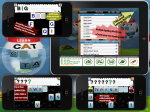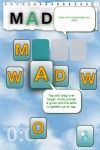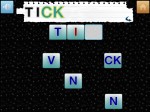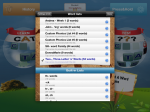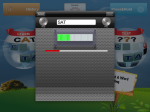
Build A Word Application helps students as young as three learn how to spell. Students are motivated through positive reinforcement in the form of a fun balloon popping game offered after each successfully “written” word.
This spelling app now comes with accessibility features for VISUALLY impaired students and those struggling with fine motor skills. The number of built-in-words was increased to 700 words that include Dolch’s Sight Word List and much more. The spelling words come with a professional narration in this update. Still the best feature of all is the option to create your own spelling lists – just type in a new word and record your voice!
What’s New in Version 4.0
* accessibility options for VISUALLY impaired and for those with slower motor functions
* PROFESSIONAL narration
* 1200 spelling words plus option to create your own spelling words
* added number of word letters (iPad)
* three modes: Learn, Practice and Test (quiz)
* child-proof settings button (press and hold)
* student’s progress recorded in HISTORY
* option to choose number of redundant letters
* improved navigation
* bug fixes
* the app is COPPA (the Children’s Online Privacy Protection Rule) compliant
The features of this unique spelling app are:
► option to create a list of spelling words in addition to 1200 existing words(type in the new word and record your voice)!
► audio and/or visual prompt
► PROFESSIONAL narration or child’s narration
► a number of spelling-word lists created for users’ convenience: Short Vowels, Long Vowels, Sight Words,… and Your Own Word lists
► three modes: Learn, Practice and Test (quiz)
► upper or lower case letters
► optional Montessori-style color coding of vowels and consonants
► immediate sound feedback heard upon tapping the correct/incorrect letter
► positive reinforcement lowers affective filters making learning a more engaging and enjoyable process
► ACCESSIBILITY options to for VISUALLY impaired and those struggling with fine motor skills
► option of custom made features for special needs students
Educational
The underlying pedagogical methodology for this application is to teach children how to combine letters into words. A child is offered a visual prompt or/and audio prompt. The words are divided into categories based on their phonics features. Thus, children are introduced to short-vowel words, long-vowel words and sight words.
Teaching Methodology
By now your child has probably already learned all the letters, but connecting letters into words is still an abstract concept. It takes a while for the child to start writing first two-letter words, then three, four, and so forth.
Advice to parents:
- teach your child three basic principles:
- we write from left to right
- we write one letter at a time
- we follow a certain order when writing letters (it is not random)
- keep writing practice short and entertaining
- explain the words if necessary
- encourage your child to engage in activities and games in which writing is essential
- be a role model for your child: WRITE!
To make spelling words less challenging for children, the words are usually divided into categories based on their phonics features. Thus, the children are introduced to short-vowel words, long-vowel words and sight words.
The easiest group of words would be short words consisting of short vowels (usually one or two consonants). When there is a single vowel in a short word or syllable, the vowel makes a short sound. These short vowels usually appear at the beginning of the word or between two consonants. In such words the number of pronounced sounds most usually corresponds to the number of written letters. This concept is the most salient concept for young beginners. Examples of such words are: cat, end, pig, bus, log…
Then come the short words that include long vowels. When a short word or syllable ends with a vowel-consonant -e combination (a-k-e), the vowel is usually long and the “e” at the end of the word is silent (this rule does not apply in all cases). Examples are: bake, take, hide… When a word or syllable has a single vowel and the vowel appears at the end of the word or syllable, the vowel usually makes the long sound. Examples are: no, go, by…
The sight words refer to words that readers are expected to recognize instantly. They are very frequent. They represent 50% to 70% of the words the children are expected to encounter. Also, many sight words do not sound as they are spelled making them difficult for sounding out using phonics. Practically, children must learn most of these words by sight hence the name – sight words. Other words on the sight-word list are taken from either short- or long-vowel word lists based on their frequeny. It is believed that children who focused on and learned sight words would become stronger readers .One of two lists of sight words that help educators and parents identify these words is Dolch List of Basic Sight Words consisting of 220 words.

- “CK” spelling word group
***For PHONICS version of Build A Word Easy Spelling go to http://itunes.apple.com/us/app/build-a-word-easy-spelling/id436102581?mt=8***
In compliance with Children’s Online Privacy Protection Rule (COPPA), @Reks (aka AtReks) Apps do not collect / share any users’ personal information, furthermore, @Reks apps do not contain Social Network Integration or other Social features such as links to Facebook, Twitter and others. Visit our website to check our privacy policy: https://www.atreks.com – Thank you!
